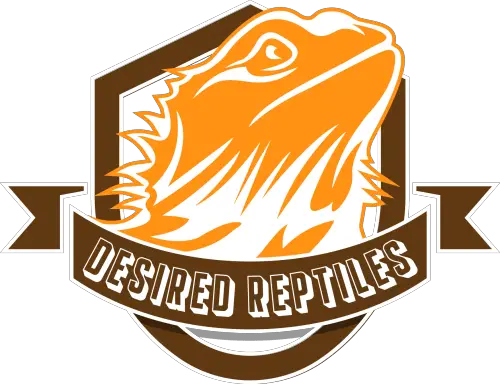Bearded dragons, just like humans, are omnivorous, and require a balanced diet of greens and animal-based protein to survive. However, despite the importance of vegetables in your dragon’s diet, not all of them are safe to consume. Some of them contain harmful substances or lack essential nutrients, either of which can cause your pet to fall critically ill.
Bearded dragons can eat a variety of vegetables including staple nutrient-dense types such as collard greens or mustard greens as well as occasional moderate-value vegetables like carrots and lettuce. As long as you can differentiate the staple veggies from the occasional ones and provide them accordingly, your pet will grow healthy and strong.
By the end of this discussion, you’ll know which vegetables are staples, which should be fed occasionally, and how to create a healthy diet for your bearded dragon.
What Makes an Ideal Vegetable for a Bearded Dragon?
The ideal vegetable for your bearded dragon should be nutrient-dense with low water, oxalate, phosphorus, and goitrogen content as high levels of these can be dangerous. Let’s further understand these elements and how they interact with your beardie.
Water Content
Bearded dragons are desert reptiles that require minimal water to survive and they get most of their hydration from the insects and shrubs they eat in the wild. Hence, vegetables like lettuce, cucumber, and spinach are unnaturally watery and dangerous. Feeding them such vegetables too often can lead to diarrhea and malnutrition in your bearded dragon.
Oxalate Content
Oxalates are substances found in vegetables that readily bind with calcium forming a kind of salt. They are hazardous for bearded dragons because they jeopardize calcium absorption which is crucial for their health and development. The ideal oxalate content for beardies is below 30mg/100g, or 2:1 of the calcium-to-oxalate ratio.
Phosphorus
Similarly to oxalate, phosphorus readily binds with calcium slashing the portion your bearded dragon should utilize. To support your dragon’s bone health, its diet should maintain a calcium-to-phosphorus ratio of (2:1). Examples of vegetables high in phosphorus are spinach, beans, asparagus, broccoli, and beets.
Goitrogen
Goitrogens are compounds capable of interfering with your bearded dragon’s thyroid function, causing growth and development deficiencies. They are mostly found in cruciferous vegetables like brussels sprouts, broccoli, and cabbages. While they may be safe for humans to consume, bearded dragons are at a higher risk of falling ill from them due to their unique and less complex metabolism.
Now that we know the safest type of vegetable to feed bearded dragons, let’s move on to creating the ultimate salad for your beardie!

10 Healthy Daily and Occasional Vegetables for Bearded Dragons
Understanding the nutritional content of different vegetables will help you prepare a safe and balanced meal for your bearded dragon. I’ve drafted a list of the most suitable selections for your pet:
1. Collard Greens (Daily)
Collard greens are nutritious for bearded dragons offering antiviral and antibacterial properties that can help boost their immunity against certain diseases. In addition, collard greens are low in goitrogen and have a great calcium-to-phosphorus ratio of 5:1. However, they are particularly high in oxalic acid. Still, the risk of calcium deficiency due to oxalate binding is low because collard greens have calcium in abundance.
2. Mustard Greens (Daily)
Mustard greens are rich in vitamin C, providing a secure way to boost immunity compared to citrus fruits which are too acidic for bearded dragons. They also contain a calcium-to-phosphorus ratio of 3.5:1 making them safe for your beardie’s consumption, and great for its bone development.
3. Dandelion Greens (Daily)
Dandelion greens are rich in calcium which supports bone formation and prebiotics that promote healthy gut bacteria and digestion. They have a negligible amount of goitrogen, but higher oxalate compared to other staple greens making them a low-calcium plant for your bearded dragon. However, they are still considered staples as they are nutritious and safe for beardies to consume.
4. Turnip Greens (Daily)
Turnip greens are high in vitamin K and folate which assists in maintaining good heart and neurological health. They also comprise vitamins A and C to strengthen your dragon’s immune system against diseases. In addition, they have less oxalic acid and slightly higher phosphorus content with an even better calcium-to-phosphorus ratio (3.5:1) compared to dandelion greens.
5. Squash (Daily)
Although squash is technically a fruit, it is often considered a vegetable because we normally boil it before consumption, and is exceptional for bearded dragons. It is rich in fiber that enables healthy digestion and vitamin A that helps maintain your beardie’s eyesight. Also, its crunchy texture helps to prevent plaque formation making it great for your dragon’s dentition. Squash has very low levels of goitrogens and oxalate, but also calcium.
6. Carrots (Occasionally)
Carrots are rich in antioxidants and vitamin A. Antioxidants help to combat free radicals, which can disrupt cellular activity and lead to cancers. They’re also great for deterring plaque formation thanks to their crunchy texture.
7. Bok Choy (Occasionally)
Bok choy is predominantly high in vitamins E and K which work hand in hand to promote healthy cell formation and combat free radicals. Sadly, bok choy contains high levels of goitrogens and oxalates which are dangerous for your bearded dragon making it occasional.
8. Lettuce (Occasionally)
Although lettuce is not nutrient-dense, it’s a good source of vitamins A and K which can help promote the well-being of your beardie. It is an occasional veggie due to its high water content but can be given to beardies suffering from dehydration.
9. Cabbage (Occasionally)
Cabbage is high in vitamin C which can help to combat diseases. Red cabbage has antioxidant and anti-diabetic properties that can help stabilize your bearded dragon’s metabolism in cases of obesity. However, it is goitrogen-rich, making it dangerous if fed frequently.
10. Kale (Occasionally)
Kale could be considered a daily green, but it’s high in goitrogens. Kale is packed with vitamins C, K, and A which can greatly boost your pet’s immunity. If you put it in perspective, kale is twice as nutritious as squash.
Even More Occasional Vegetables You Can Feed To Your Beardie:
The Perfect Bearded Dragon Salad
The best salad for healthy bearded dragons is composed of 75% to 100% of staple veggies. I strongly suggest you wait for your pet to reach the sub-adult stage before introducing occasional vegetables. Beardies require sufficient calcium to develop strong bones, and since some occasional veggies contain high oxalate and phosphorus, it’s better to avoid them until your beardie is strong enough.
How to Prepare Your Bearded Dragon’s Salad
Now that you’re familiar with the suitable vegetables for your dragon, you can start preparing its personalized salad.
Clean the Vegetables
Thoroughly wash the greens to remove traces of fertilizers and pesticides before preparing the salad. If possible, stick to organically grown vegetables as they’re healthier and safer for your pet.
Shred or Cut the Vegetables
Peel squash, pumpkins, and yams, then cut them into smaller pieces or shred them with a grater to prevent choking when you give them to your pet. Leafy greens can be sliced or cut into smaller, chewable pieces.
Dish The Appropriate Amount
Adult bearded dragons require half a cup of vegetables while juveniles and hatchlings require a quarter cup. Also, consider the proportional amount of animal protein needed at each stage of their growth. So, after selecting the most nutritious greens you must include the necessary protein to create a balanced diet.
The table below will help you understand your beardie’s unique ratio of greens and animal protein according to its age.
| Age (months) | Percentage |
|---|---|
| 0 – 3 (Baby stage) | 30% greens, 70% grubs |
| 3 – 6 (Juvenile stage) | 30% greens, 70% grubs |
| 6 – 9 (Subadult stage) | 40% greens, 60% grubs |
| 9+ (Adult stage) | 70% greens, 30% grubs |
How to Store Your Bearded Dragon’s Veggies
To keep your uncut greens fresh, wrap them in paper towels with their stalks intact, place them in airtight containers, and refrigerate them. For the squash, wrap it in cling film to prevent rotting, before placing it in the refrigerator.
Do not freeze your veggies; they lose their texture after defrosting, similar to how your dragon might lose its appetite on seeing or tasting them. Better to keep the crunch intact for your beardie’s enthusiasm and dental health.
How to Feed Your Picky Bearded Dragon Its Greens
Bearded dragons can become picky eaters, sometimes refusing to eat their greens even though these are essential in their diet. If this happens, here’s how to ensure your pet eats its vegetables and stays healthy:
Alternate Your Options
Your bearded dragon might simply be tired of repeatedly eating the same plant. Incorporate other vegetables to provide it with a different taste, texture, and aroma. Besides, there’s hardly one vegetable that has every nutrient your bearded dragon needs. It’s important to provide alternatives to ensure that every nutrient is sourced or complemented conveniently.
Disguise The Veggies
A little trick now and then doesn’t hurt. Place some delicious grubs underneath the veggies in the bowl. As your beardie tries to reach them, it might eat some of the greens. Make sure the bugs are alive and mobile to capture its interest.
Hand Feed Your Beardie
Some bearded dragons require extra effort to feed them or to specifically get them to eat their vegetables. Hold a piece of vegetable with your bare hands or a tweezer and put it in front of your pet—it might be inclined to take it from you. Alternatively, move the pile of veggies on its plate; the movement may stimulate your beardie’s instincts to grab the food.
A Vet May be Necessary
If your bearded dragon still avoids its greens despite your efforts, visit your veterinarian for evaluation. There could be an underlying problem hindering it from eating its greens.
